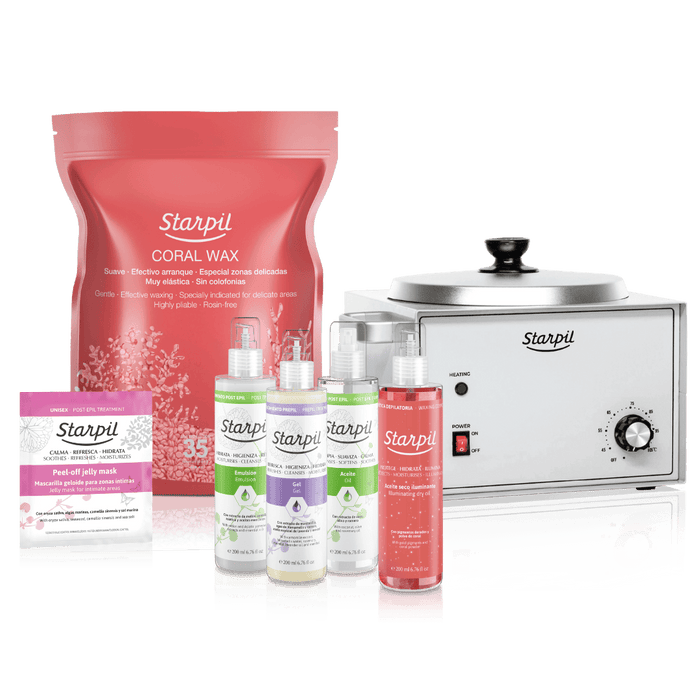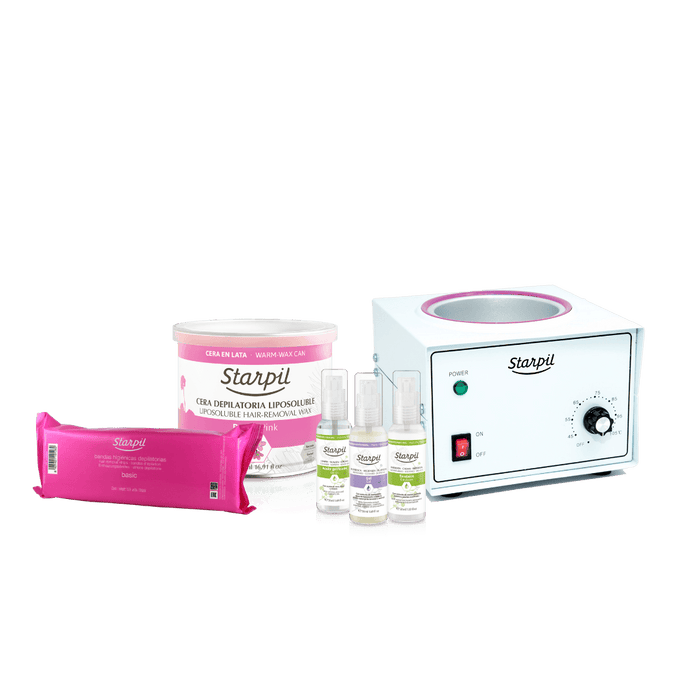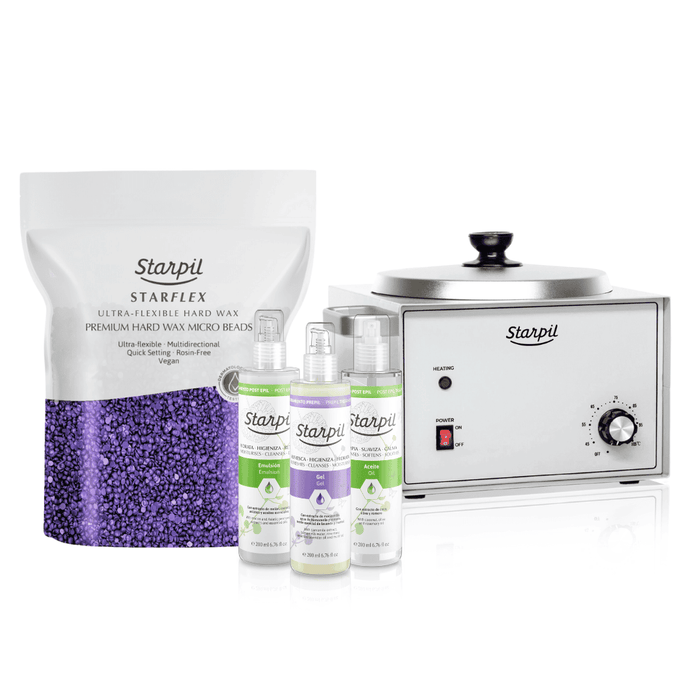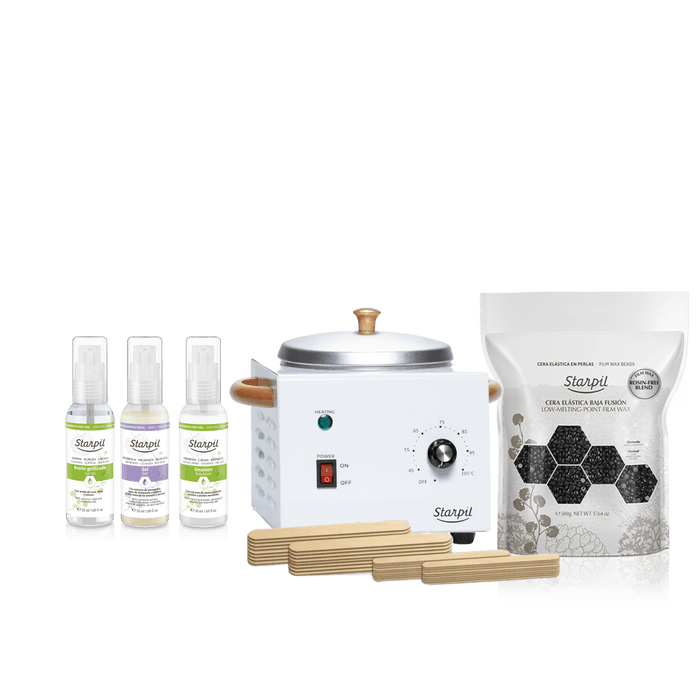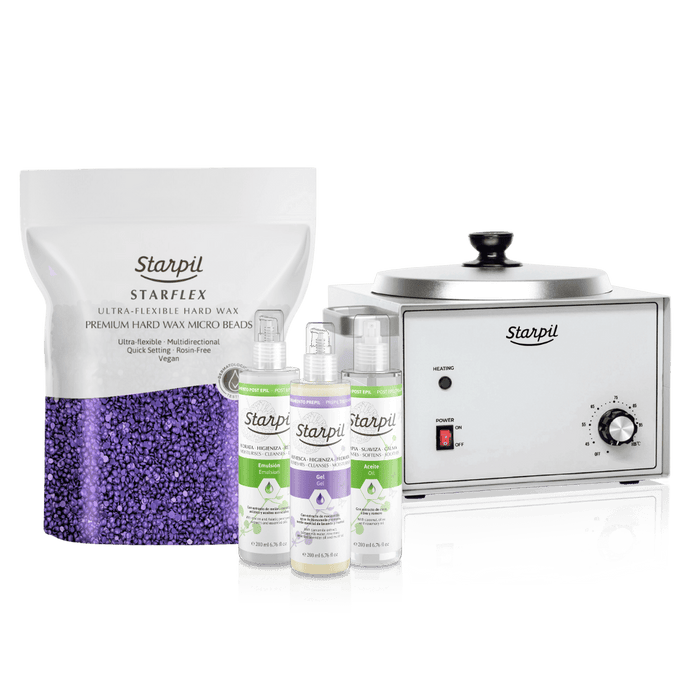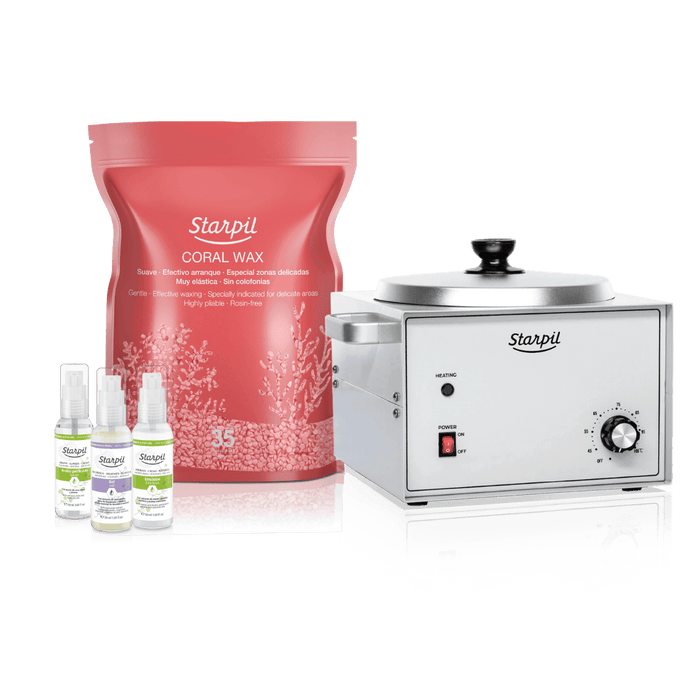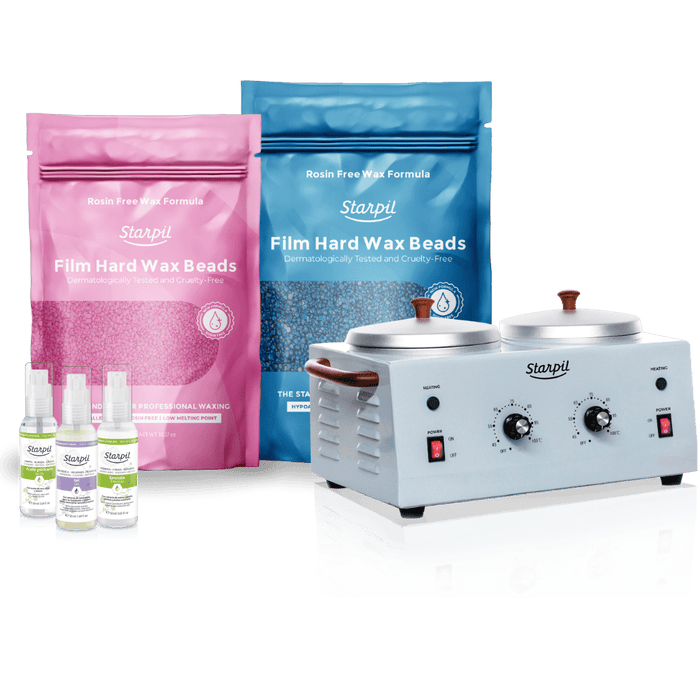
Maintaining the highest standards of hygiene and safety is crucial for every professional waxing salon. Not only does it protect your clients from infections and injuries, but it also safeguards your salon’s reputation and builds client trust.
In an industry where personal care is the focus, a single lapse in hygiene can have serious consequences. This blog will guide professional estheticians and business owners on how to implement and maintain effective hygiene and safety practices.
READ: Benefits of Using Professional Hard Wax Beads for Your Salon

Why Hygiene & Safety are Non-Negotiables in Waxing Salons
When it comes to professional waxing services, hygiene and safety are non-negotiable. Clients trust you with their skin, often in sensitive areas, and they expect a clean and safe environment. Here’s why prioritizing these standards is essential:
-
Preventing Infections: Waxing involves removing hair from the root, which can leave hair follicles open and vulnerable to bacteria. Poor hygiene can introduce bacteria, leading to infections, rashes, or more serious complications.
-
Ensuring Client Comfort: A clean environment not only reduces the risk of infection but also helps clients feel safe and relaxed. Clients are more likely to return to a salon where they feel confident about hygiene practices.
-
Protecting Your Reputation: A single contamination or hygiene incident can damage your salon’s reputation and result in negative reviews or legal issues. Prioritizing hygiene helps protect your business and your professional image.
-
Complying with Regulations: Many regions have strict health and safety regulations for salons. Following best practices ensures you stay compliant and avoid penalties or closures.
READ: Professional Waxing Kits Guide
Key Hygiene Practices Every Waxing Salon Should Follow
Ensuring a clean and sanitary environment requires a proactive approach. Here are essential hygiene practices every waxing salon should implement:

1. Sanitize Tools and Equipment
All tools used during waxing must be properly sanitized after every use. This includes:
-
Tweezers, Scissors, and Spatulas: These should be disinfected with medical-grade disinfectants or sterilized after use.
-
Wax Warmers: Regularly clean and sanitize your wax warmers. Never double-dip applicators, as this introduces bacteria into the wax pot.
Disposable tools, such as wooden spatulas and gloves, should be used only once and disposed of immediately after each client session.
2. Maintain Clean Workstations
Ensure all surfaces, including treatment tables, counters, and chairs, are disinfected between clients. Use EPA-approved disinfectants to wipe down surfaces, and cover treatment tables with disposable or freshly laundered linens.
3. Use Proper Hand Hygiene
Proper hand hygiene is one of the simplest yet most effective ways to prevent the spread of infections. Estheticians should:
-
Wash hands with antibacterial soap and warm water before and after each service.
-
Wear disposable gloves during waxing treatments and change them between clients.
-
Avoid touching their face or hair while wearing gloves to prevent contamination.
4. Ensure Client Hygiene
Encourage clients to arrive clean and inform them about pre-wax hygiene practices. Offering pre-wax wipes to clean themselves off prior to service can also help ensure the area being waxed is clean before starting the service. Additionally, ask clients to inform you of any skin conditions, allergies, or medications that may affect their skin’s sensitivity.
READ: Top Professional Wax Warmers for Salon Use

Safety Standards to Protect Clients & Estheticians
Safety in a waxing salon is just as important as hygiene. Here are some key safety measures to protect both clients and estheticians during waxing treatments:
1. Perform a Patch Test
Before applying wax to a larger area, always conduct a patch test on a small section of skin. This helps determine if the client has any allergic reactions or sensitivities to the wax. A patch test minimizes the risk of adverse reactions during the service.
2. Temperature Control
Wax that is too hot can cause burns, while wax that is too cold may not adhere properly, leading to ineffective hair removal. Always check the wax temperature on your wrist before applying it to the client. Invest in a quality wax warmer that maintains a consistent temperature.
3. Know When Not to Wax
There are circumstances where waxing should be avoided to prevent harm to the client. These include:
-
Sunburned or irritated skin
-
Clients with active infections or open wounds
-
Clients using medications like Accutane or retinoids, which can make the skin more sensitive
4. Provide Post-Wax Care Instructions
Proper aftercare is critical to avoid irritation or infection post-wax. Provide clients with clear instructions on how to care for their skin, including avoiding sun exposure, hot showers, and tight clothing for at least 24-48 hours after waxing. Offering post-wax care products like post-wax lotion or ingrown hair serums can also enhance client satisfaction.
READ: Essential Tools and Tips to Start Your Own Waxing Business

Creating a Culture of Hygiene and Safety in Your Salon
Maintaining hygiene and safety standards isn’t just about following protocols; it’s about creating a culture that prioritizes client well-being. Here’s how to establish and sustain this culture in your salon:
1. Train Your Team Regularly
Ensure that all staff members are well-trained in hygiene and safety protocols. Conduct regular training sessions to keep everyone updated on the latest practices and regulations. Provide clear guidelines and ensure new employees understand and follow them from day one.
2. Use Checklists and Protocols
Implement daily checklists for cleaning and disinfecting tasks. These checklists can help staff stay consistent and accountable for maintaining hygiene standards. Develop protocols for each stage of the waxing process, from preparation to aftercare, and make them accessible to all employees.
3. Communicate with Clients
Let your clients know about the steps you take to maintain a clean and safe environment. Display hygiene and safety policies prominently in your salon, and don’t hesitate to explain your practices if clients ask. Transparency builds trust and reassures clients of their safety.
4. Invest in Quality Products
High-quality professional wax and pre and post-wax care products can make a significant difference in client safety and comfort. Starpil offers professional-grade products designed with safety and hygiene in mind, ensuring a superior waxing experience.
READ: How to Calculate ROI for Your Waxing Business

Final Thoughts
Hygiene and safety in waxing salons are essential for protecting your clients, your staff, and your business. By implementing rigorous sanitation practices, following safety protocols, and creating a culture that values cleanliness, you can ensure a positive and professional waxing experience for everyone. Prioritizing hygiene not only minimizes risks but also enhances your salon’s reputation, client trust, and overall success.
In the end, a clean and safe salon is a thriving salon. Make hygiene and safety the foundation of your professional services and watch your business flourish.
Professional Brazilian Waxing Kits for Estheticians
- Regular
- from $179.90
- Sale
- from $179.90
- Regular
-
$241.40
- Unit Price
- per
Facial Waxing Kits for Professionals
- Regular
- from $89.90
- Sale
- from $89.90
- Regular
-
$137.50
- Unit Price
- per
Versatile Full Body Waxing Kits for Estheticians
- Regular
- from $101.90
- Sale
- from $101.90
- Regular
-
$159.90
- Unit Price
- per
Standard Hard Wax Kit
- Regular
- $116.90
- Sale
- $116.90
- Regular
-
$197.30
- Unit Price
- per
Beginner Roll-on Wax Kit
- Regular
- from $97.90
- Sale
- from $97.90
- Regular
-
- Unit Price
- per
Speed Waxing Kits
- Regular
- from $90.90
- Sale
- from $90.90
- Regular
-
$129.10
- Unit Price
- per
Luxury Waxing Kits
- Regular
- $139.90
- Sale
- $139.90
- Regular
-
$212.50
- Unit Price
- per
Esthetician Student Waxing Kits
- Regular
- from $99.90
- Sale
- from $99.90
- Regular
-
$137.50
- Unit Price
- per


